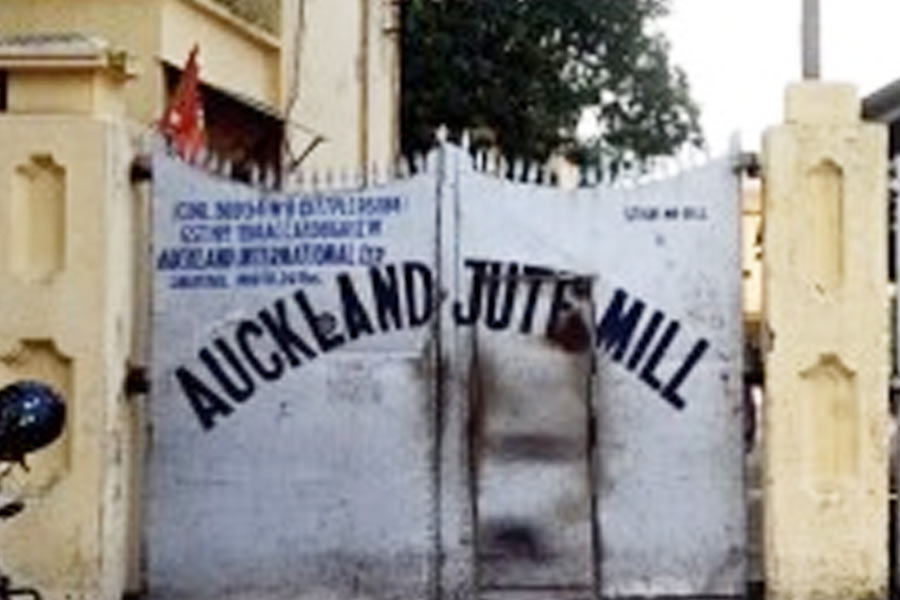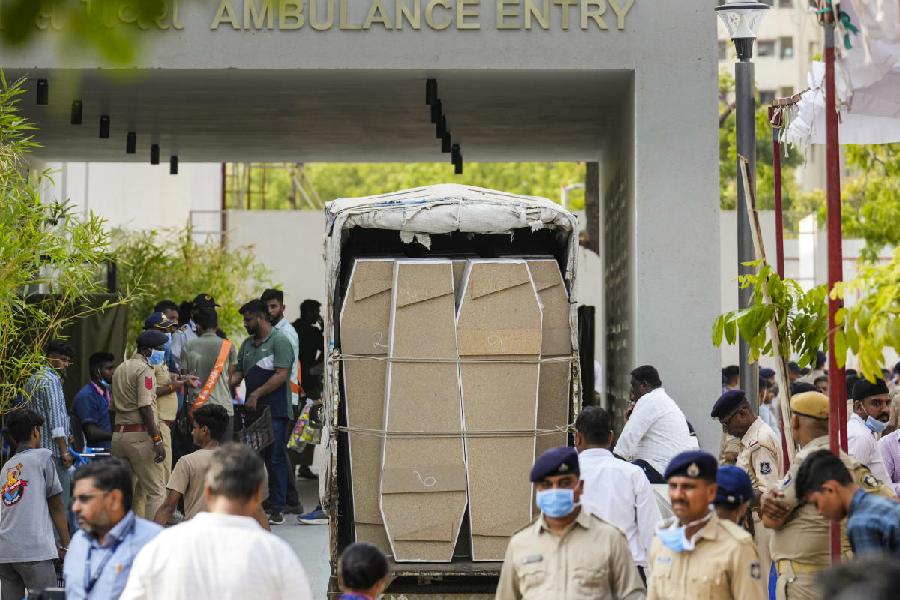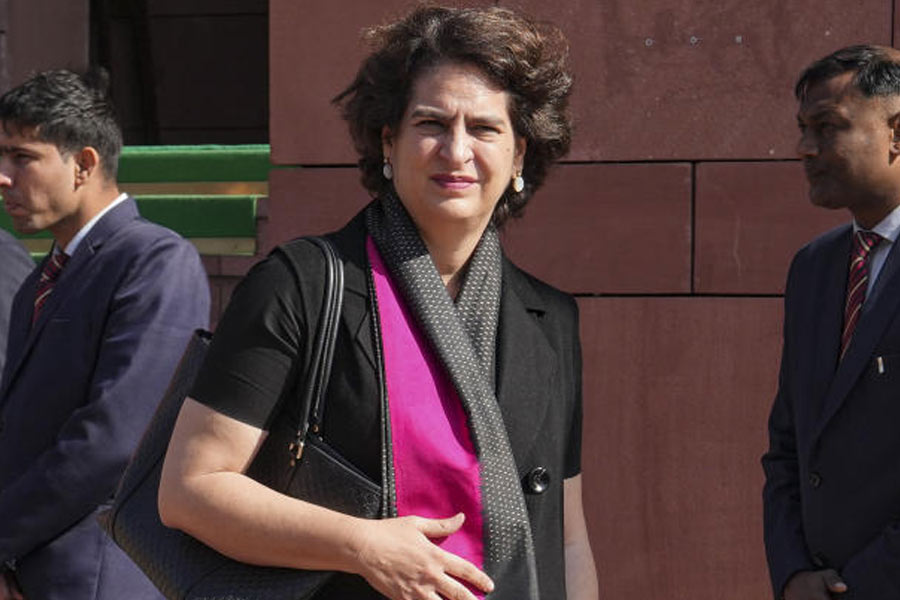In London last year, I encountered a Bangla band somewhat different from the dime-a-dozen ones that have sprung up lately. ?Bangla? is from Dhaka, and is a complete contrast to the bands that rule West Bengal?s airwaves. Our bangla bands celebrate a decidedly middle-class urban Bengali experience through an idiom of music that remains a derivative of easy-to-listen rock. ?Bangla?s? first album Kingkartabbabimurho (?Nonplussed?) interprets the music of bauls through a wide range of Western sounds but without sacrificing the simplicity of folk instruments and of regional bangla accents.
The divergent sounds of epaar Bangla?s ?Bhoomi? and opaar Bangla?s ?Bangla? are reflected on their album covers. On the one hand, the smiling visages of Bhoomi?s members; on the other, a black and white line drawing of a dotara. Decentred and oblique, Kingkartabbabimurho?s sleeve visualizes ?Bangla?s? non-plussed confrontation with bangla culture; likewise, Bhoomi?s sleeve, replicates the band?s musical claim to Bangabhoomi.
Both the bands claim ?Bangaliness? through their music and self-presentation, but so very differently. Do their divergences represent new formations of Bengali identity and experiences on either side of the border, in response to the political and ideological forces at work in each national space? Despite the exchange of buses, saris, fish and Rabindrasan- geet, two distinct Bengali youth cultures seem clearly evolving.
Joy of living
In Bangladesh, rickshaws existing cheek- by-jowl with Pajeros and Toyotas tell more than the obvious story of rampant economic inequality. The extravagantly decorated rickshaws also speak of the human spirit, determined to find joy and beauty out of next-to-nothing. A sheer joie de vivre irradiates the battle for survival.
At Jatra, a shop for furnishings and accessories, one can hear the strangely substantial voice of Bangla. In the cloudburst of colour, greenery, light and sound, a baul family can sometimes be heard singing full-throatedly while customers meander. ?Aamar naam Rosina?, sings a seven-year-old. Her robust spirit transforms the potential fetishization of folk art and folk motifs.
The band ?Bangla? is unambiguous about its inspiration, ?We are devotees of Lalon.? But why bauls? ?They give all Bangalis goosebumps?, a band member replied, ?they?re much closer to our heart than Rabindranath or Nazrul.?
Back to the roots
In resisting a high cultural, sanskritic bhadralok genealogy through a folkish, baul-inspired and experimental Bengaliness, ?Bangla?s? artistic endeavour echoed that of many a musician, artist and filmmaker in Dhaka. Contrary to what one might imagine in the ?NGO nation?, Bangladesh?s cultural producers do not necessarily kowtow to the big donors. Commissioned by the UNDP to sing about human security, ?Bangla? sang in a rustic idiom.
The wider movement that ?Bangla? is part of is perhaps better understood as an anti-movement. Being against genealogy means being resolutely wedded to ?small platforms?, to quote a young artist group. To those seeking self-expression while avoiding all hegemonies ? whether pan-Islamic or high Bengali ? the nomadic, near-crazy baul often offers the ultimate inspiration. In Tareque and Catherine Masud?s recent internationally-acclaimed film Matir Moyna, baul music functions as a powerful commentary on the competition between global and local Islams ? a crucial axis of Bangla identity-formation. Matir Moyna and ?Bangla? transport us into Bengals of the mind: a world of small platforms, bauls, rivers and monsoons, not boundaries and hierarchies.










